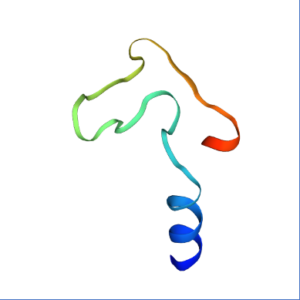COVID-19

Like a lot of biotech and pharmaceutical companies we’re looking into ways we can help the COVID-19 situation and as usual, our input is fairly unique. The virus SARS (Severe Acute Respiratory Syndrome) CoV2 is closely related to the SARS Coronavirus SARS CoV, which is an RNA-containing virus like HCV, HIV and influenza’s such as H5N1. Thus, it made sense to investigate the literature and databases for molecules that can interact and even inhibit these viruses. By linking this approach to venoms, we uncovered a couple of papers from 2011 about antimicrobial scorpion toxins that also appear to have antiviral activity. Cationic antimicrobial peptides (AMPs) are a very common component of scorpion venoms, whose presence may be to protect the host against the venom microbiome1.It is possible that venom glands have a virome too, generating a selection pressure for the synthesis of antiviral venom peptides also. We have been studying the presence of the venom microbiome in many species2, and the presence of a virome is a viable hypothesis.
Peptides with antiviral activities have been detected in the venom of scorpions such as Peptide Hp1090, isolated from the venom of Heterometrus petersii (sequence IFKAIWSGIKSL6). Hp1090 has an alpha helix and ribbon structure as modelled in SWISS-MODEL3,4,5 (Figure 1) and has been shown to inhibit HCV replication and even destroys viral integrity directly6. Searches also identified a modified toxin with antiviral activity from the Chinese Swimming Scorpion Lychas mucronatus, where the Glycine and Proline residues have been substituted with Lysine or Arginine to improve the positive charge and helical structure of the peptide7. This synthetic toxin mucroporin-M1, with its modified residues, is laid out in yellow LFRLIKSLIKRLVSAFK7. This particular peptide motif appears to be very common in scorpion (and some spider) venoms.
With over 2400 known scorpion species, the right peptides are out there and even if they’re not optimal, by finding those with the most interesting activities and using structure-activity relationships (SAR) we can begin to design venom-inspired drug backups for SARS CoV2 as a contingency alongside the COVID-19 antivirals and drug repurposing trials.
We wish everyone the best of luck in the fight against COVID-19 and we are offering extra discounts for SARS CoV2 research during March and April.
ATargeted Venom Discovery Array
References
- Ul-Hasan, S., Rodríguez-Román, E., Reitzel, A. M., Adams, R. M. M., Herzig, V., Nobile, C. J., … Colston, T. J. (2019). The emerging field of venom-microbiomics for exploring venom as a microenvironment, and the corresponding Initiative for Venom Associated Microbes and Parasites (iVAMP). Toxicon: X, 4. https://doi.org/10.1016/j.toxcx.2019.100016
- Esmaeilishirazifard, E., Usher, L., Trim, C., Denise, H., Sangal, V., Tyson, G. H., … Moschos, S. A. (2018). Microbial adaptation to venom is common in snakes and spiders. BioRxiv, 348433. https://doi.org/10.1101/348433
- Waterhouse, A., Bertoni, M., Bienert, S., Studer, G., Tauriello, G., Gumienny, R., Heer, F.T., de Beer, T.A.P., Rempfer, C., Bordoli, L., Lepore, R., Schwede, T. SWISS-MODEL: homology modelling of protein structures and complexes. Nucleic Acids Res. 46(W1), W296-W303 (2018).
- Guex, N., Peitsch, M.C., Schwede, T. Automated comparative protein structure modeling with SWISS-MODEL and Swiss-PdbViewer: A historical perspective. Electrophoresis 30, S162-S173 (2009).
- Bienert, S., Waterhouse, A., de Beer, T.A.P., Tauriello, G., Studer, G., Bordoli, L., Schwede, T. The SWISS-MODEL Repository – new features and functionality. Nucleic Acids Res. 45, D313-D319 (2017).
- Yan, R., Zhao, Z., He, Y., Wu, L., Cai, D., Hong, W., … Li, W. (2011). A new natural α-helical peptide from the venom of the scorpion Heterometrus petersii kills HCV. Peptides, 32(1), 11–19. https://doi.org/10.1016/j.peptides.2010.10.008
- Li, Q., Zhao, Z., Zhou, D., Chen, Y., Hong, W., Cao, L., … Li, W. (2011). Virucidal activity of a scorpion venom peptide variant mucroporin-M1 against measles, SARS-CoV and influenza H5N1 viruses. Peptides, 32(7), 1518-1525
